Something’s moving — I can hear soft bumps and faint slithering coming from the stacked rows of 70-odd bins in the center of the room. The crisp label on the edge of each tray reads: D. couperi.
More slithering. Nick Clark rolls one of the drawers open, and peeking out from the tip of a cardboard paper-towel roll is a young eastern indigo snake. Staring up at me, he scents the air with his tongue.
Next year, this little snake and 19 others here at the Orianne Center for Indigo Conservation (OCIC) will be the first indigo snakes ever reintroduced to Florida, at The Nature Conservancy’s Apalachicola Bluffs and Ravines Preserve. The partnership is part of an effort to return the snakes to a part of their former range — the Florida Panhandle — an important step for a species in trouble.
Sandhills, Snakes, and Gopher Tortoises
Eastern indigo snakes are unmistakable against the palette of greys, greens, and browns of Florida’s pinelands. Jet-black, iridescent scales cover their bodies, glistening like an oil slick in the sunlight. Below their large, dark eyes, a vibrant scarlet-orange wash lines their throats and chins.
The longest nonvenomous snake in North America, indigo snakes can reach lengths of more than 8 feet. Pound-for-pound they need as much territory as a lion — males patrol more than 1,200 acres — which is the largest home range of any North American snake. And like lions, indigo snakes are apex predators, devouring just about anything they can overpower, including small alligators, turtles, small mammals, birds, and even rattlesnakes.
“They have had an interesting history because of their docile temperament, they virtually never bite people even when picked up in the wild,” says Dirk Stevenson, the fire forest initiative director at The Orianne Society and an expert on indigos. “They’re also good looking and have always had a following amongst snake enthusiasts.”
Once widespread throughout the southeast, today indigos are only found, with difficulty, in peninsular Florida and southern Georgia. “The species is declining almost to point of disappearing in the western portion of its range,” says Stevenson.
Habitat loss and fragmentation are the major culprits, as is the case with the decline of another emblematic Florida reptile, the gopher tortoise. Gopher tortoises excavate deep burrows, which indigo snakes and more than 350 other Florida species depend upon to stay warm during periodic winter freezes. When tortoise populations crashed in northern Florida, indigo snakes soon followed.
The species is declining almost to point of disappearing in the western portion of its range.
Dirk Stevenson.
A Big Step for Little Snakes
“Here we go,” says Nick Clark, a snake specialist at the OCIC. Grabbing the cardboard tube, he gently tips the little snake onto his outstretched palm. It immediately begins exploring, moving steadily through Clark’s hands. “You can see his tongue flicking,” he says, “he’s very curious about what’s going on.”
Located in Central Florida, the OCIC is an eastern indigo snake captive breeding facility established by The Orianne Society and now operated by the Central Florida Zoo. Lead by director Fred Antonio, the OCIC has a healthcare center, herpetarium, and outdoor enclosures all dedicated to breeding eastern indigo snakes.
As Clark talks, he constantly moves his hands to keep up with the active little indigo. The snake pokes around his elbow before trying to head over his shoulder. “They’re just like kids,” Clark says, “they know exactly where you don’t want them to go and then head for it.”
Born in August 2014, these snakes still have nearly a year to go before they will be released into in the wild. In the spring of 2016, the OCIC and the Conservancy will release 20 snakes into the Conservancy’s Apalachicola Bluffs and Ravines Preserve in North Florida. About 30 others will head to southern Alabama’s Conecuh National Forest, where the OCIC and Auburn University have released nearly 100 indigos over the last four years.
Antonio explains that they wait until the snakes are about 18 to 20 months old to give them the best chance of survival. The smaller the snakes are, the more vulnerable they are to predators, like red-shouldered hawk.
“Currently we are working on the best strategy for reintroduction there,” says Antonio, “so we are still designing that model and will be looking closely at that over the next six months or so.”
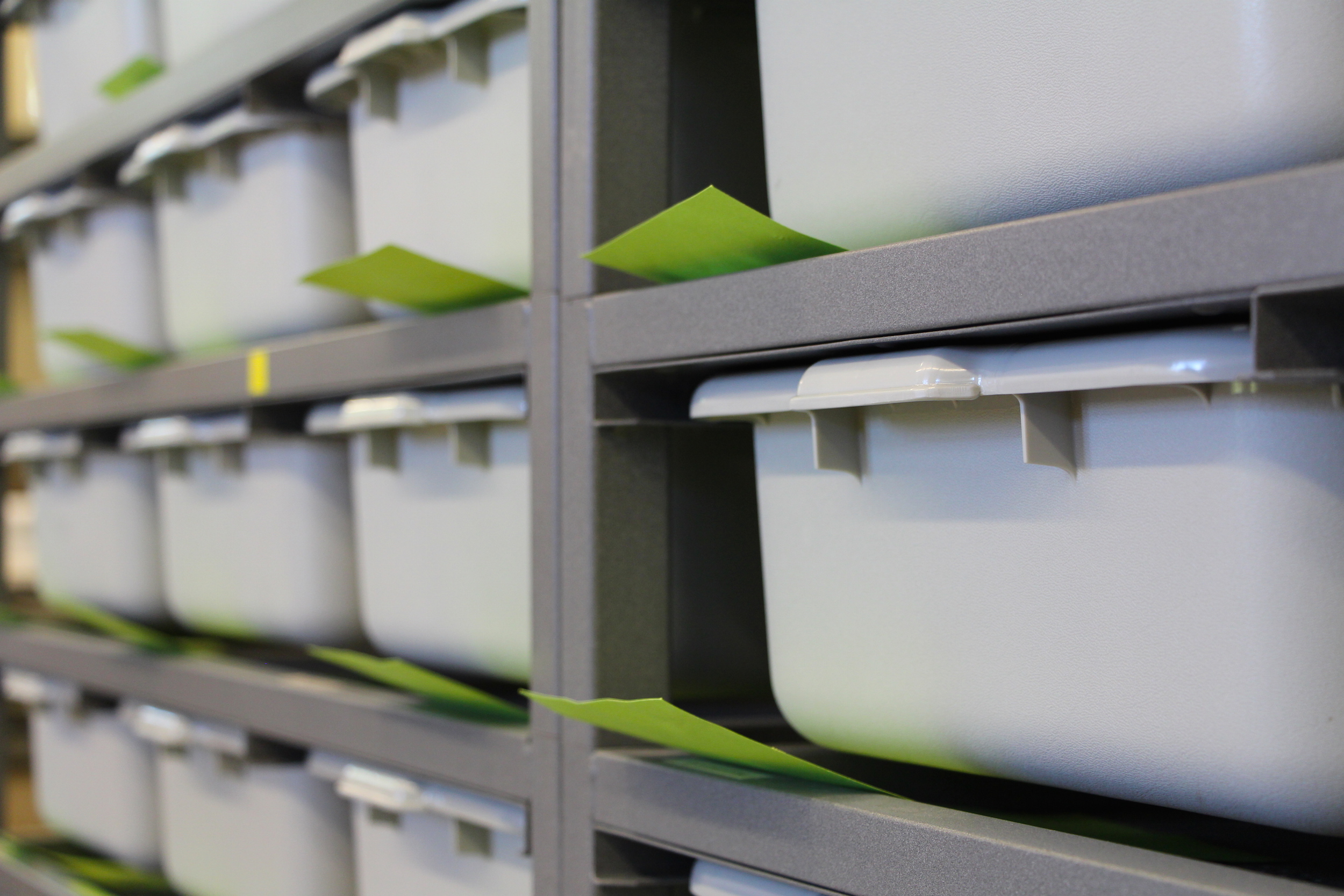
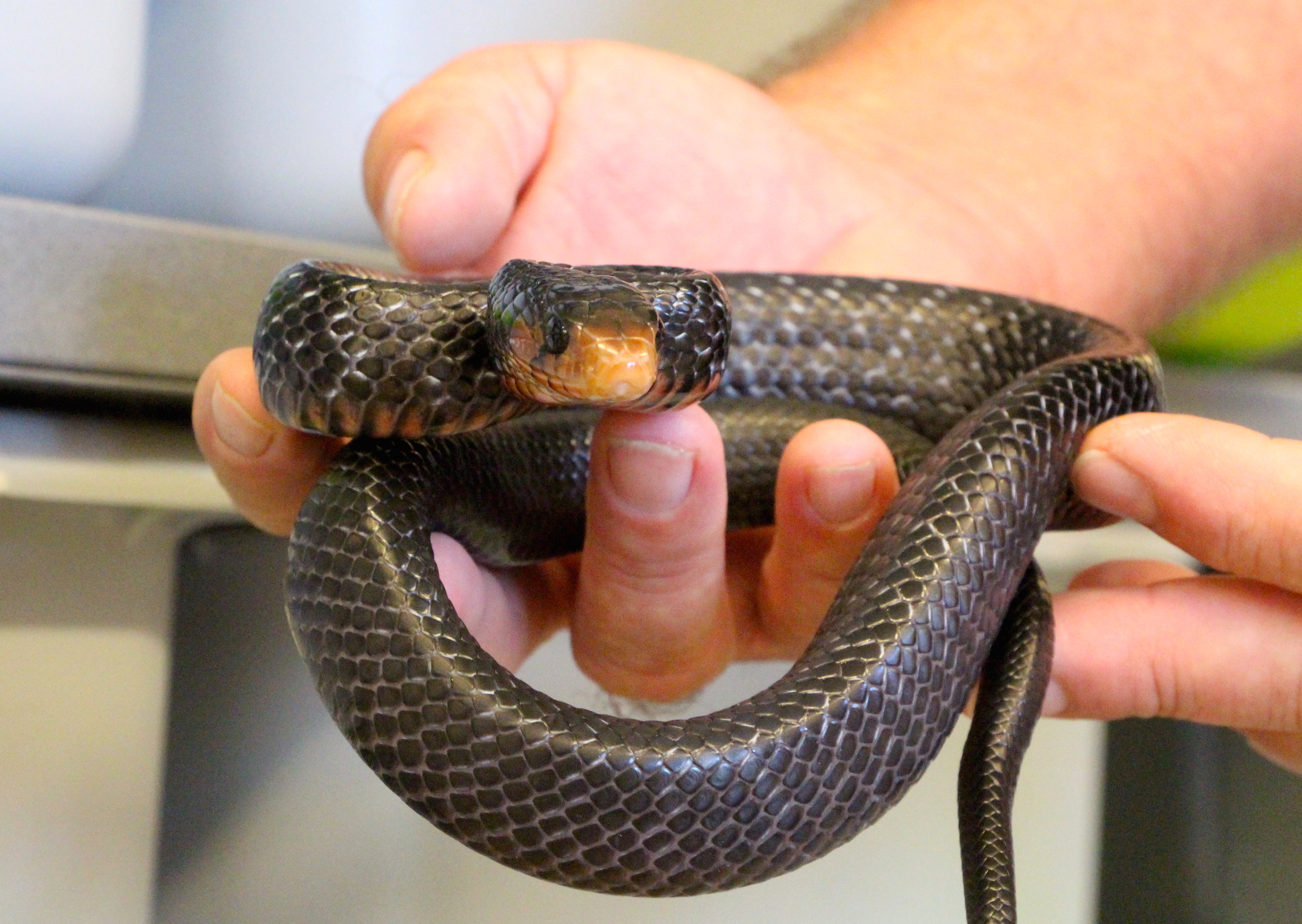
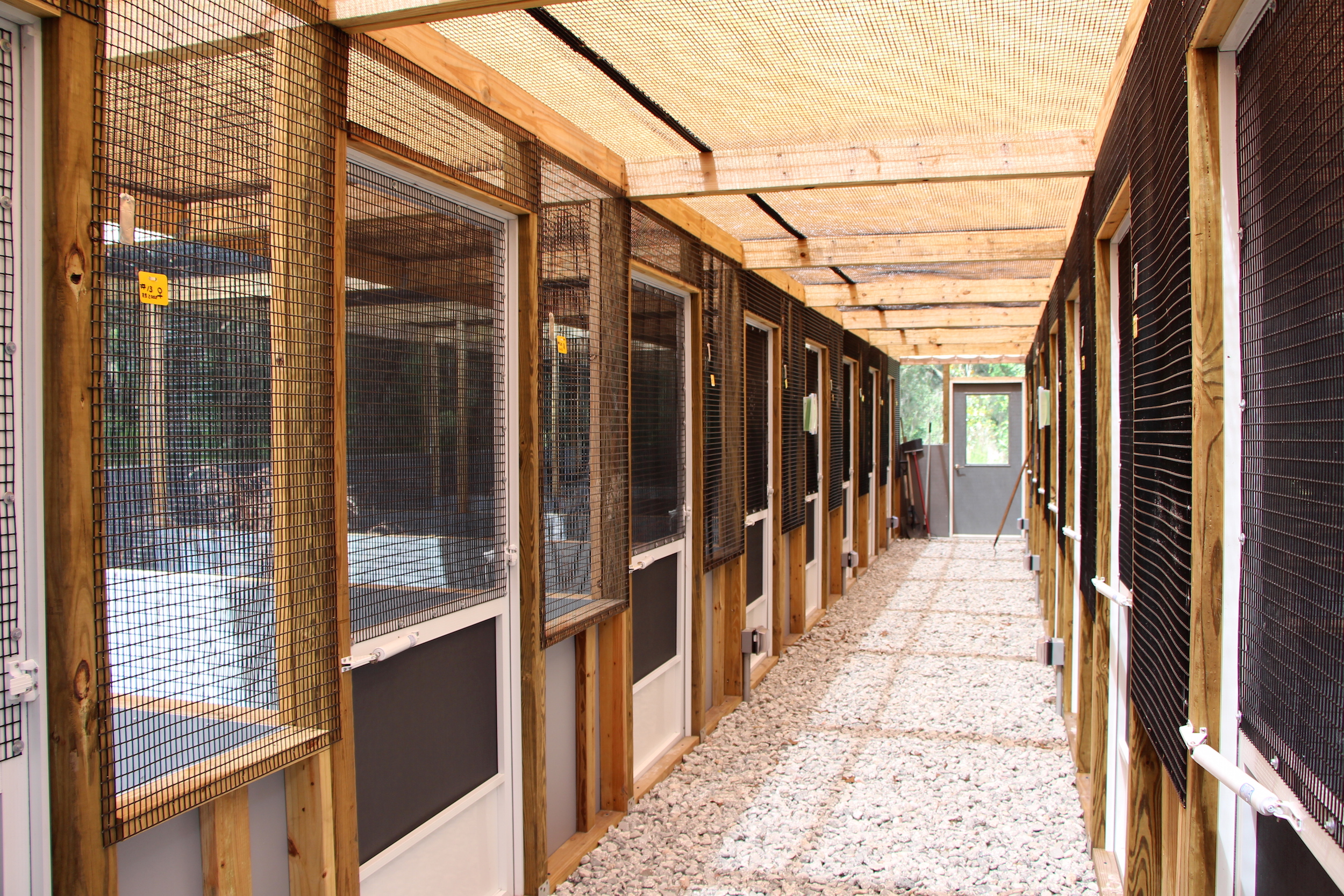
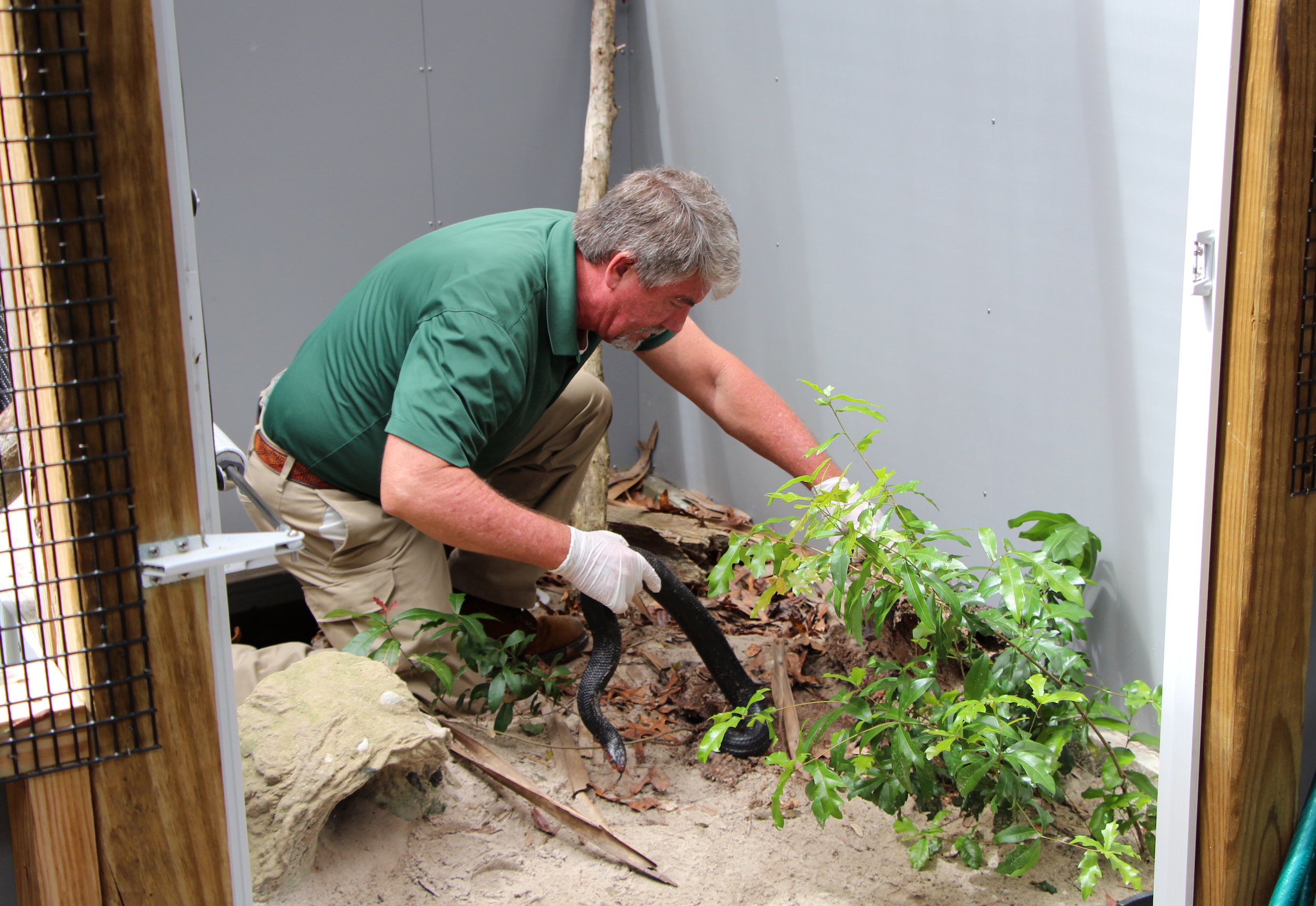
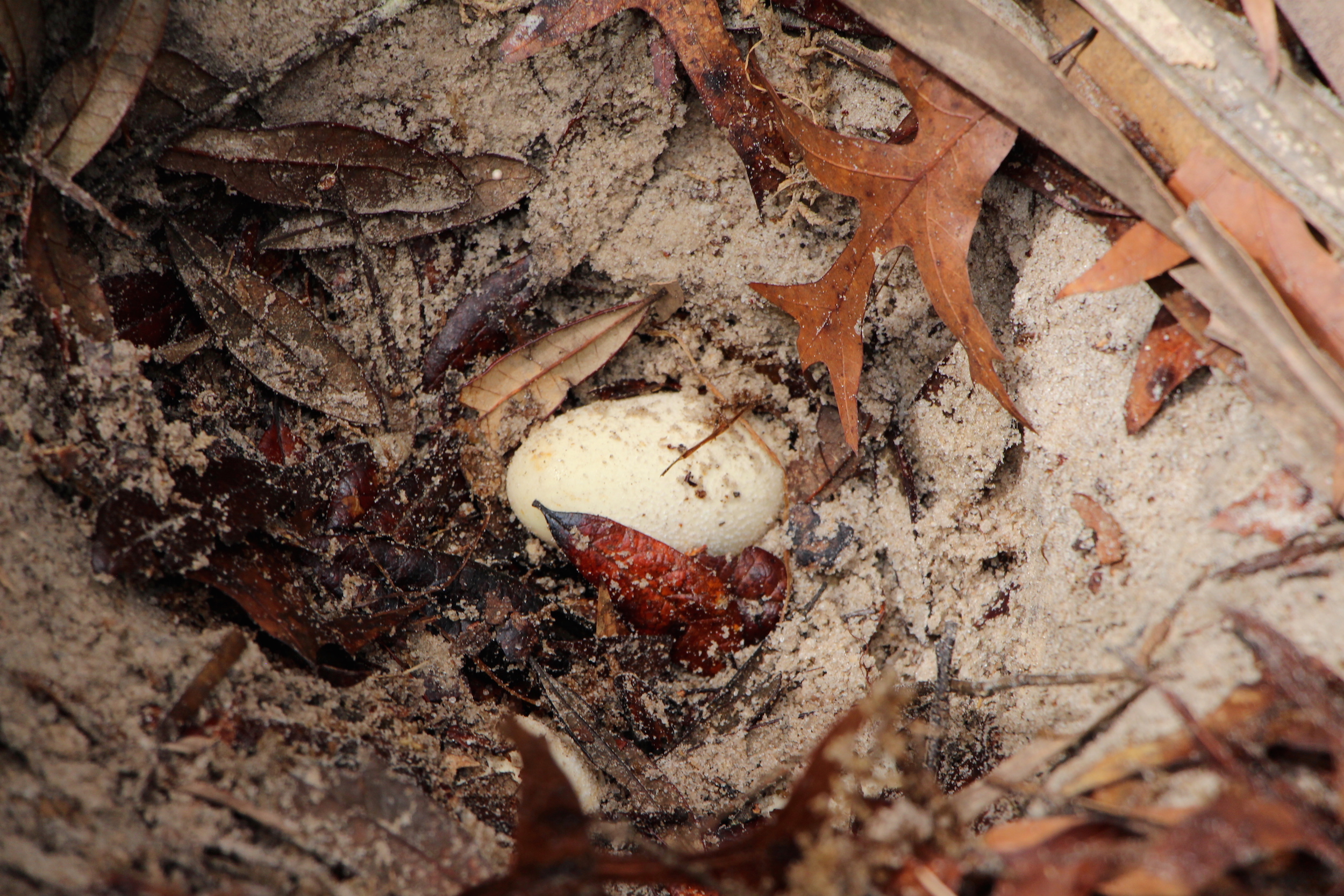
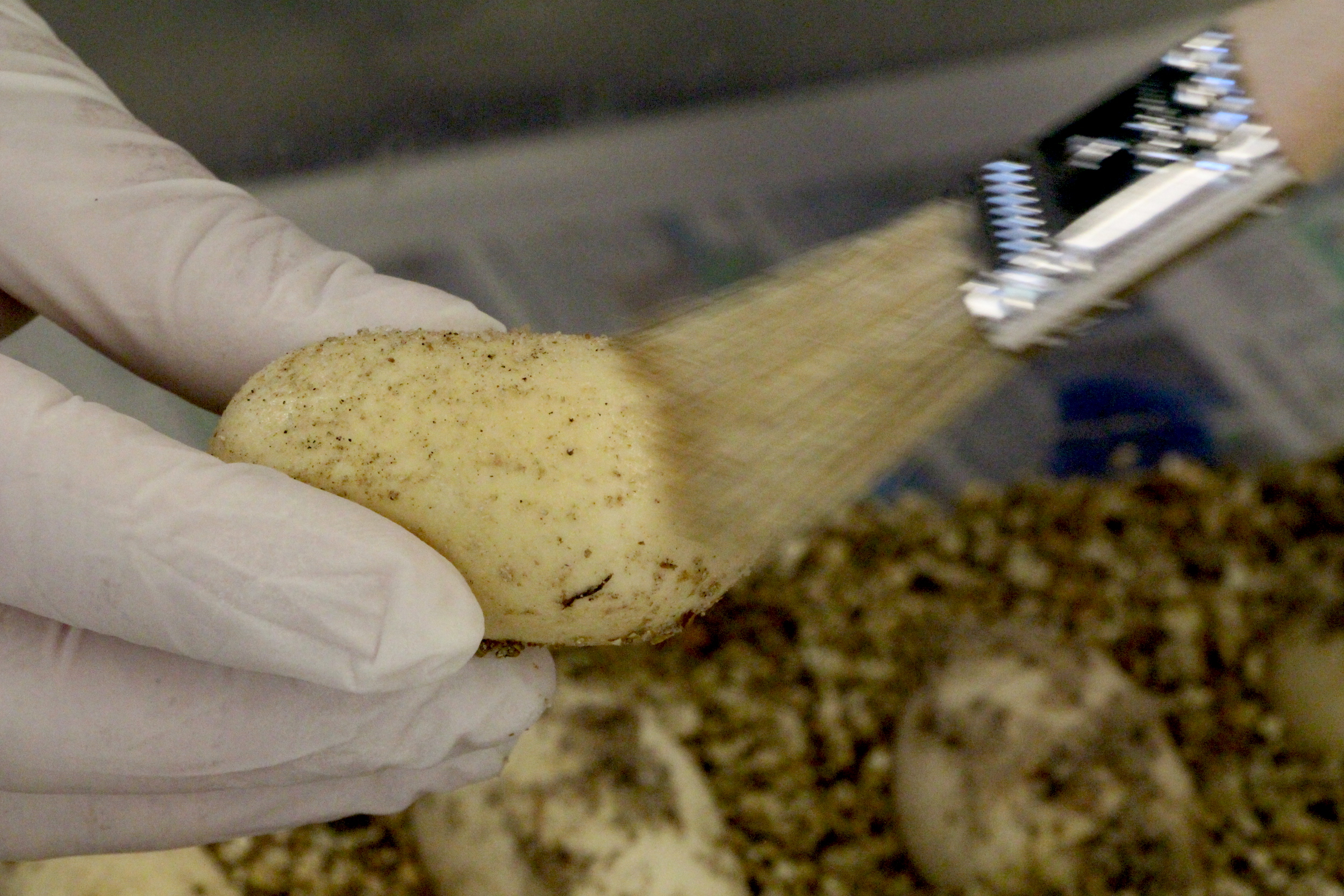
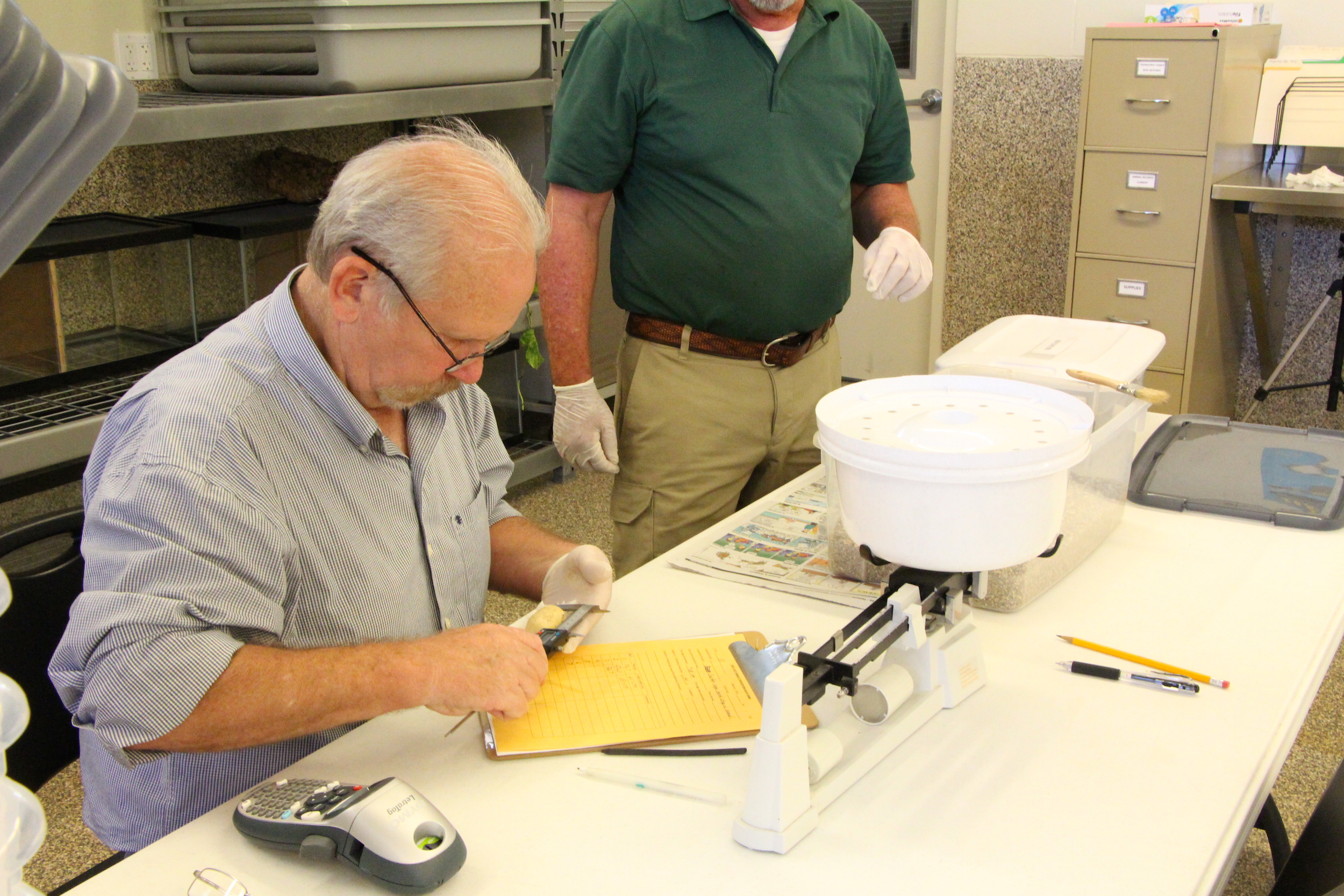
Hatching the Next Generation
“We have eggs,” says Clark, digging gently through the sand and leaf litter.
We’re in one of the outdoor enclosures, checking on the female indigo snakes that are expected to lay eggs this spring. Designed to mimic the sandhill habitat, each enclosure is complete with a fabricated gopher tortoise burrow made from a buried white plastic cooler.
After gently lifting the female snake aside, Clark searches carefully through the leaf litter covering a 12-inch deep hole in the sand. During laying season, the OCIC staff check the gravid females each day to see if any eggs were laid.
“This looks like a good one,” Clark says, lifting an oblong, cream-colored egg from the sand. Careful not to shift the egg’s position, he places it inside a plastic rubber bin filled with vermiculite, which looks like cat litter. Six more eggs join the first, as the female indigo watches quietly from the shelter of a log a foot away.
Collecting finished, it’s time to process the eggs. As Antonio carries the rubber tub, Nick picks up the female and carries her into the herpetarium.
First, Antonio and Clark run their hands along the female’s body to make sure that she doesn’t have any unlaid eggs still inside. Next, they set to work processing the eggs: each is carefully brushed, weighed, measured, and marked with a number using a charcoal drawing pencil.
“By taking this data on all of these eggs and females over the years, we’ll be able to develop a huge database to look at eastern indigo snake reproduction in captivity,” says Antonio, “and hopefully make statement on what their reproductive capability is in the wild.”
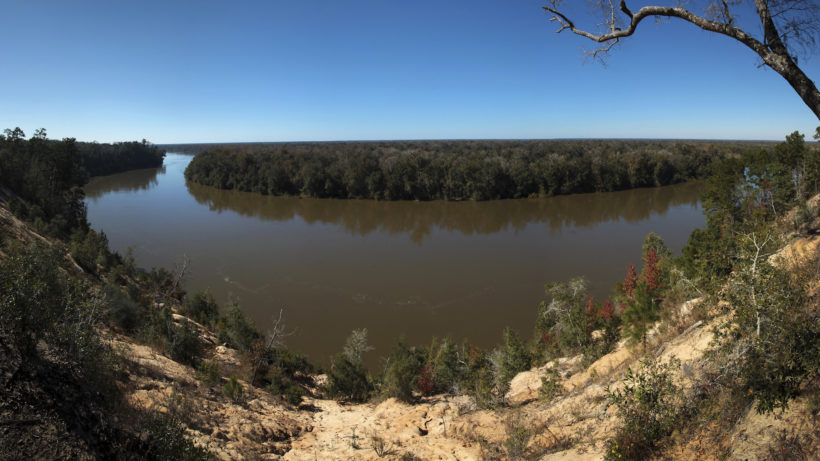
A New Future for Florida Indigos
The reintroduction at ABRP is an important piece of the puzzle for returning the eastern indigo snake to its former range and helping this threatened species recover.
“All indigo experts agree that, for the snake to be recovered, there will have to be viable population in the western portion of the species’ range,” says Stevenson. “We have habitats there that could support them, but they went missing historically so now we need to put them back.”
The next challenge will be linking the remaining preserves and public lands where indigos are found, so that portions of the population are not isolated as Florida’s rampant development continues.
Antonio says that if the OCIC’s breeding program continues to go well, additional reintroductions could help separate populations of indigos merge into each other and repopulate the region.
“We are trying to bring back an iconic reptile of the deep south,” says Stevenson. “We have people travel from all over the world to Georgia and Florida with hopes of seeing an indigo snake in the wild. This is a phenomenal animal, and I can’t understate that.”
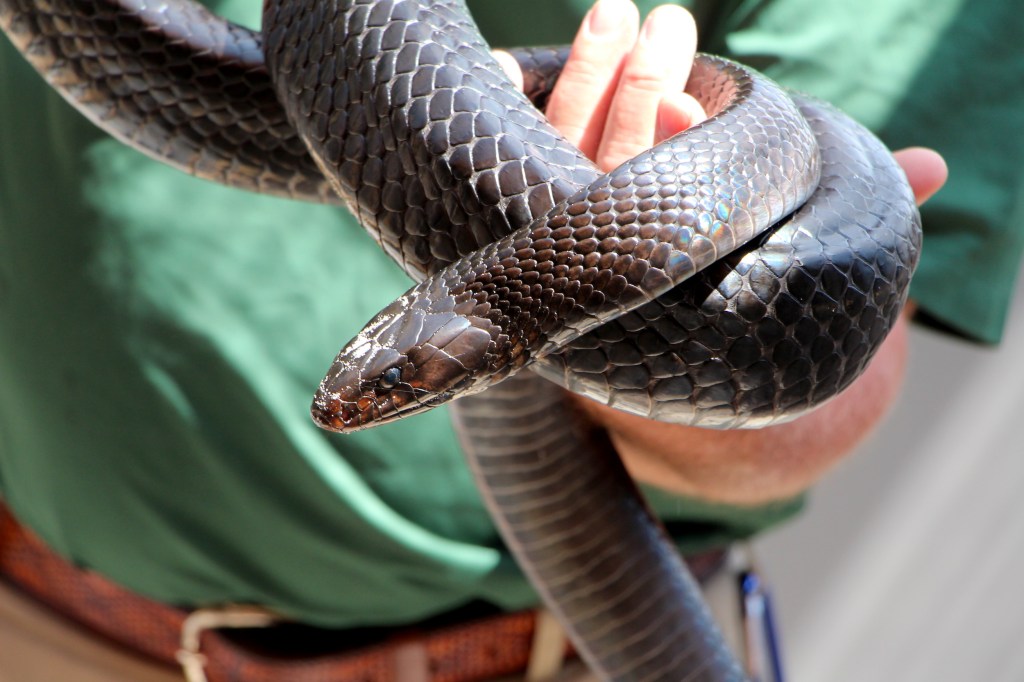



The Indigo is a magnificent species. Unfortunately, I question the success of reintroduction simply because Florida’s politicians continue to destroy every piece of natural land. More people = more roads = more kills of all wildlife especially snakes.
I respect those who work in nature and with wildlife more than anyone. What we need first is to stop and reverse the destruction of natural lands. We also need to reverse the human population growth. If that all sounds impossible, so too is the survival of wildlife.
I ask all people to give all your assets to The Nature Conservancy upon your death. Your children will survive without your money. Wildlife will not.
Pretty sure I took a photo of one of these snakes last week in North Carolina at a Nature Preserve in the Outer Banks….check your facebook post comments, I posted my photo of it there in the comment section 🙂
I s this release wise with the problem Florida is having with pythons and other non-native reptiles.
How are gopher tortoises doing? Do you think the indigos be able to thrive if the tortoises are not there to provide deep burrows?
About ten years ago had a ranch in Hood County, Texas. It was elevated terrain with rough rocky outcroppings and number of small ravines. Ran into a number of Indigo’s with some 6-8 ft long. There were also a number of Rattlesnakes. Rattlesnakes were depleted because of problems with cattle and calf`s. For whatever reason the Indigo’s, which were never bothered also gradually disappeared from the property and none were seen after 4-5 years. Wonder if the Rattlers were a primary source of prey or perhaps the large number of Hawks that migrated annually thru the area. It was not heavily wooded and numerous open grassy areas.
Have a couple Indigo snakes seen on my 30 acre wildlife habitat here in coastal region Georgia.
That should be “palette” not “palate.”
I remember these from when I was a kid 60+ years ago. So beautiful, we were told that as long as we saw these snakes, not to worry about Rattlers or coral snakes.
Indigo snakes are beautiful snakes that everyone should appreciate. I have been fortunate to see one in the wild at a sanctuary in central Florida.
Thanks for this very interesting article – but especially for your efforts. I don’t live in FL anymore – but am ‘dialed’ in on our wildlife. We have a wonderful array of snakes here in NoVa. So glad to see the re-introduction of the indigo snake!
The Eastern Indigo is a truly beautiful animal and I am delighted to read about the efforts to save it from extinction. Maybe I missed it, but did the article mention whether or not it is officially listed as “endangered?”
The article mentioned a clutch of just six eggs – isn’t that an unusually low number for a snake’s clutch of eggs? Do Eastern Indigos typically lay fewer eggs than most other snakes?
Is the Eastern Indigo a “seize and swallow” predator or does it constrict its prey? I’ve seen a very large Western Indigo in a pet store and it seemed to be a seize and swallow predator, but it was eating mice, which were very small in comparison to the size of the snake.
I also recall being told that Indigo snakes are immune to pit viper venom. Assuming that is true, I was wondering if they are also immune to the neurotoxic venom found in coral snakes, especially because the two species overlap in their native areas?
I would be interested in breeding the Eastern Indigo or otherwise assisting in the repopulation effort. Is that even possible?
This is so wonderful to hear! Beautiful snakes. I hope they can populate readily. I live in N. Florida and will be on the lookout for them to see if they are still around in my area.
I saw this nice article on them a while ago via Longform. http://gardenandgun.com/article/tangled-indigo
this isn’t in article, its a personal story! useless for my project. 🙁
We used to have them in Brevard County, and I would love to have them on my property here. I have a lot of gopher tortoises, so I think it is the correct environment for indigos.
If you decide to release any in Brevard County, please contact me.
This program is the best news I’ve heard in 2015.